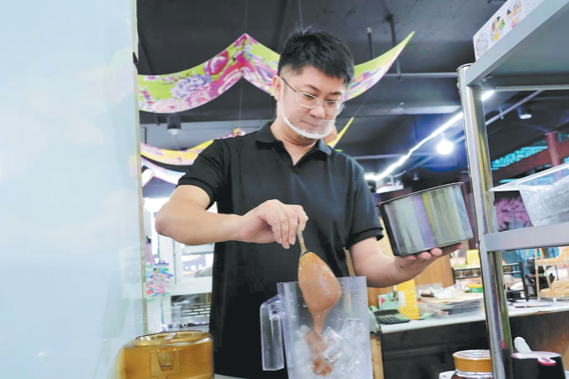Lack of medication hampers treatment of patients with rare diseases


Treatment shortfall
According to a report released in February by the Chinese Organization for Rare Disorders, a lack of affordable medication means patients with rare conditions, like Liang's son, are less likely to receive effective treatment than those with more common conditions.
As a result, they are often more severely affected by their illnesses and are more likely to end up in poverty.
The report noted that as of the end of last year, medication was only available globally for 74 of the 121 diseases in China that the National Health Commission defines as rare.
Of the 162 drugs on the global market used to treat the 74 diseases, 83 were available in China. However, only 29 were included in basic medical insurance programs, and they were only effective in treating 18 rare diseases, the report said.
As a result, about 230,000 patients-most of whom will rely on medication for their entire lives-have to bear all their drug costs themselves, with annual per patient expenditure ranging from 189 yuan to 5 million yuan. Moreover, millions more have no access to effective medication, while the lack of reimbursement means they cannot obtain adequate, sustained treatment, the report said.
A survey of 5,810 patients with rare diseases conducted by the organization from 2014 until last year showed that 42 percent received no treatment, while most of those who received some form of medication took a lower dose than that recommended by their physicians.
Moreover, more than half of the 5,810 patients developed ongoing chronic problems as a result of their illnesses and they spent more than 80 percent of their family's earnings on treatment every year.
There are no official statistics about the number of patients with rare diseases in China, but some experts believe the figure may exceed 20 million.
Over the past 10 years, a program run by the China Charity Federation has donated drugs valued at more than 1.3 billion yuan to 134 Gaucher patients, meaning the average cost was about 1 million yuan per patient.
"Without the program, it would be impossible for me to obtain the medication," said Zou Zhengtao, a 31-year-old Gaucher patient in Beijing, who receives free drugs provided by the program.
Zou said he knows some Gaucher patients who have to bear the entire cost of their medication themselves: "Most of them cannot afford the original (patented) drugs, so they have to try various alternatives to survive."
- UNIDROIT to establish Asia-Pacific office in Hong Kong
- Chinese scientists discover new fossil lungfish species
- 64 sculptors build 19-meter-tall snowman in Harbin
- Study reveals thirdhand smoke as hidden indoor air pollutants
- Meeting held to mark China National Democratic Construction Association's 80th founding anniversary
- World's largest high-speed-rail tunneling machine passes 10,000 meters beneath Yangtze





































